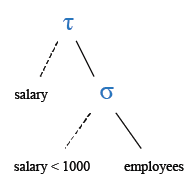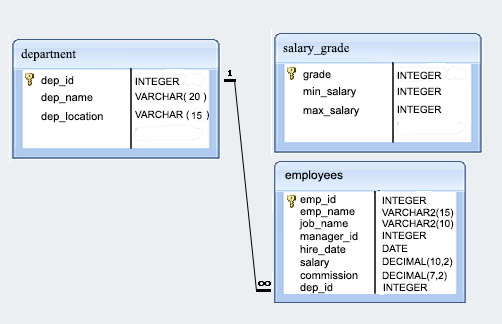SQL Exercise: Sort the employees by salary less than 1000
[An editor is available at the bottom of the page to write and execute the scripts.]
73. From the following table, write a SQL query to find those employees who earn less than 1000. Sort the result-set in ascending order by salary. Return complete information about the employees.
Pictorial Presentation:
Sample table: employees
Sample Solution:
SELECT *
FROM employees
WHERE salary < 1000
ORDER BY salary;
Sample Output:
emp_id | emp_name | job_name | manager_id | hire_date | salary | commission | dep_id --------+----------+----------+------------+------------+--------+------------+-------- 63679 | SANDRINE | CLERK | 69062 | 1990-12-18 | 900.00 | | 2001 (1 row)
Explanation:
The said query in SQL that returns all the rows and columns from the 'employees' table where the "salary" column is less than 1000, and sorts the result set in ascending order on "salary" column.
Relational Algebra Expression:
Relational Algebra Tree:
Go to:
PREV : Employees joining on given days, ascending in seniority.
NEXT : Sort the employees in ascending order on the salary.
Practice Online
Sample Database: employees
Have another way to solve this solution? Contribute your code (and comments) through Disqus.
What is the difficulty level of this exercise?
Test your Programming skills with w3resource's quiz.



